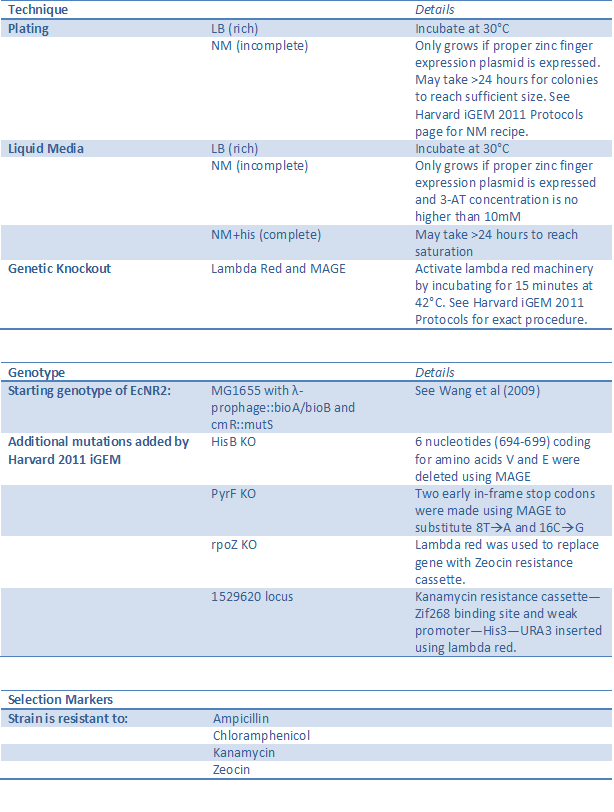Team:Harvard/Results/Biobricks
From 2011.igem.org
Overview | MAGE | Lambda Red| Chip-Based Library | One-Hybrid Selection | Zinc Finger Binders | Biobricks
One-hybrid selection system strain (BBa_K61500)
Click [http://partsregistry.org/Part:BBa_K615000 here] to see chassis page in the Registry of Standard Biological Parts
The His3-URA3 one-hybrid selection system has been developed by Meng et al (2005)to test zinc finger binding by tying the binding event to cell survival. However, Meng used a plasmid-based system where both the zinc fingers and the binding site were on vectors within the cell. We took advantage of recent advances in technology to make this one-hybrid system genome based, thus preventing one or both components from being lost during cell division, and ensuring that each cell has exactly one copy of the zinc finger binding site-His3-URA3 construct. (For a full description of the one-hybrid system, see our Selection Strain Engineering page.)
Using lambda red and MAGE, we knocked out HisB and PyrF and replaced with them with the yeast analogs His3 and URA3 under the control of a zinc finger binding site (see our MAGE and our Lambda Red results pages). The omega subunit of RNA polymerase was also knocked out and instead fused to the first zinc finger of the array to be tested (see below). This allows zinc finger binding to control expression of His3 and URA3, and thus in incomplete media the cell will only survive if the proper zinc finger is present.
Our strain was carefully characterized and shown to have the proper phenotype and be sensitive enough to recognize a valid zinc finger when diluted up to one in one thousand. The selectivity can also be adjusted by changing the concentration of 3-AT, a competitive inhibitor of His3 (see One Hybrid Selection Results for details). See below for a summary of the changes made to the strain and how to successfully use it.
 "
"









